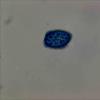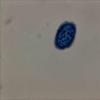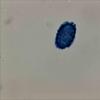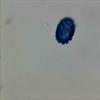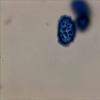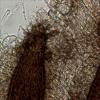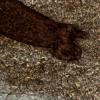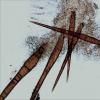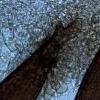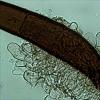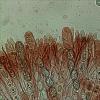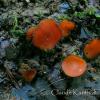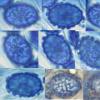
20-12-2025 15:47
Mirek GrycHi.These grew on pine wood that was heavily covere

18-12-2025 21:17
Pol DebaenstThe identification took me to Byssonectria deformi

15-12-2025 07:09
 Danny Newman
Danny Newman
indet. Rutstroemiaceae sp. on unk. fallen leavesMc

19-12-2025 10:10
Patrice TANCHAUDBonjour, récolte réalisée en milieu dunaire, a

18-12-2025 17:23
 Bruno Coué
Bruno Coué
Bonjour,je serais heureux d'avoir votre avis sur c

18-12-2025 18:07
Margot en Geert VullingsThese plumes were found on rotten wood.They strong

17-12-2025 18:35
 Michel Hairaud
Michel Hairaud
Bonjour à tous/Hi to everyone I am passing along

15-12-2025 15:48
 Danny Newman
Danny Newman
Melanospora cf. lagenaria on old, rotting, fallen
Je récidive pour la description de ce que je pense être Scutellinia olivascens, en espérant vos avis.
Biotopes : pousse sur bois pourri, débris ligneux (Fagus)
Macro
Apothécie 7-14 mm Ø, orange à orange-rougeâtre, sessile, distinctement disciforme, extérieur revêtu de poils raides, brunâtres
Face externe couverte modérément à généreusement de poils bruns, bordant la marge comme des cils
Hyménophore lisse, orange à orangé terne
Micro
Ascospores ellipsoïdes, verrues moyennes à grosses entre 1,2-1,8 (2) µm de hauteur, et parfois jusqu'à 2,5 µm de large
(15,2) 16,1-16,9 (17,1) × (9,7) 10,1-11,1 (12,2) µm
Q = (1,4) 1,44-1,6 (1,7); N = 30
Me = 16,4 × 10,7 µm; Qe = 1,5
(Piximètre, formule classique; mesures issues d'une sporée, dans bleu Coton lactique)
Asques cylindriques, octosporées, unisériés, iodonégatifs, 203-221,4 × 10,3-11,6 µm en moyenne;
Paraphyses avec cellules finales polymorphes; spatulées à longuement claviformes, en tête de serpent à utriformes, parfois fusiformes, 9,8-10,6 × 6 -7,7 µm, septées, avec contenu granulaire, hyalines dans l'eau glycérinée 15%, ± 210-230 x 6-7,7 µm en moyenne;
Poils marginaux, jaunâtres à bruns, acuminés, à apex aigus, 7 à 14 septa, parfois flexueux, parfois droits, gonflé au milieu, puis s'atténuant vers la base, base simple à bifourchue, (632,8) 642,5-919,6 (1052,1) × (31,1) 32,3-45,8 (51) µm en moyenne;
Poils superficiels, polymorphes, claviformes, cylindriques à largement cylindriques, piriformes, capitulés à largement capitulés, hyalins dans l'eau glycérinée 15%, (37,4) 44,3-63,2 (73,4) × (11,8) 14,4-17,7 (20,2) µm en moyenne;
Je place les photos...
Merci d'avance,
Claude

based of the first photo of hair base, I would call them multifurcate instead. That would go even better for S. olivascens, but the spores are too small and the ornamentation too broad and high. From the species I've seen so far, your collection reminds me on S. pennsylvanica the most (spore size and shape, multifurcate hair base, big ornamentation). But it should have much longer hairs, up to 2000 um. Very similar species is S. colensoi with the same hair length and also known from Europe, which differs in the shape of the ornamentation - S. pennsylvanica has mostly truncate / flattened warts, S. colensoi only rounded. In both species the warts coalesce to pseudoreticulum. I attach a photo of ornamentation of S. pennsylvanica (I didn't see colensoi myself yet). So far, S. pennsylvanica seems to grow only on Fagus wood (sometimes on soil close to it, but primarily on the wood).
The short hairs are indeed confusing. Among the species with multifurcate hair base, only S. vitreola and S. olivascens have hairs about 1000 um long and both have lower ornamentation. (S. cejpii has even shorter hairs, but very distinct spores). There's similar collection online, labelled S. vitreola: http://www.micobotanicajaen.com/Revista/Articulos/DMerinoA/Pirineos20141/ScutelliniaVitreola.pdf But based on the pseudoreticulate ornamentation, size of warts, spore size and Q presented there, I believe it might represent immature S. pennsylvanica (or something very close to it) as well.
Best regards,
Viktorie
I would agree with Viktorie. Other than the hairs it is a good fit for both S pennsylvanica and S colensoi. Looking at the ornamentation the two species are quite similar but S pennsylvanica looks to be closer in my view.
Mal
As you can see, I still have trouble explaining the pictures I take; it will come with time. But I especially want to thank you for your research and the comparisons that you bring me. This gives me a better overview of the neighboring species.
After looking in Schumacher's article, I'm going with you to S. pennsylvanica (provisional). I have difficulty in correctly interpreting the ornaments of ascospores; but, here too, it will come with time. Indeed, ascospores of S. colensoi have much smaller warts and rounded at the top, while S. pennsylvanica, warts are very often truncated. In terms of habitat, I'm sure the collection was growing on Fagus bark. DNA would be a necessary asset to conclude, because I find that the elements constituting Scutellinia are sometimes very similar and the differences very sharp. In America, it's possible we may have native species.
Best regards,
Claude
P.-S. : Thank you for the photos of the S. pennsylvanica ascospores; he confirms me well.
Indeed, before I came to S. olivascens, I had also watched and read S. colensoi carefully, but I found that the ascospores in my collection had larger and larger ornaments. However, I would never have been to S. pennsylvanica, for I still have too much difficulty in correctly interpreting the ornaments; but it will come.
Best,
Claude


